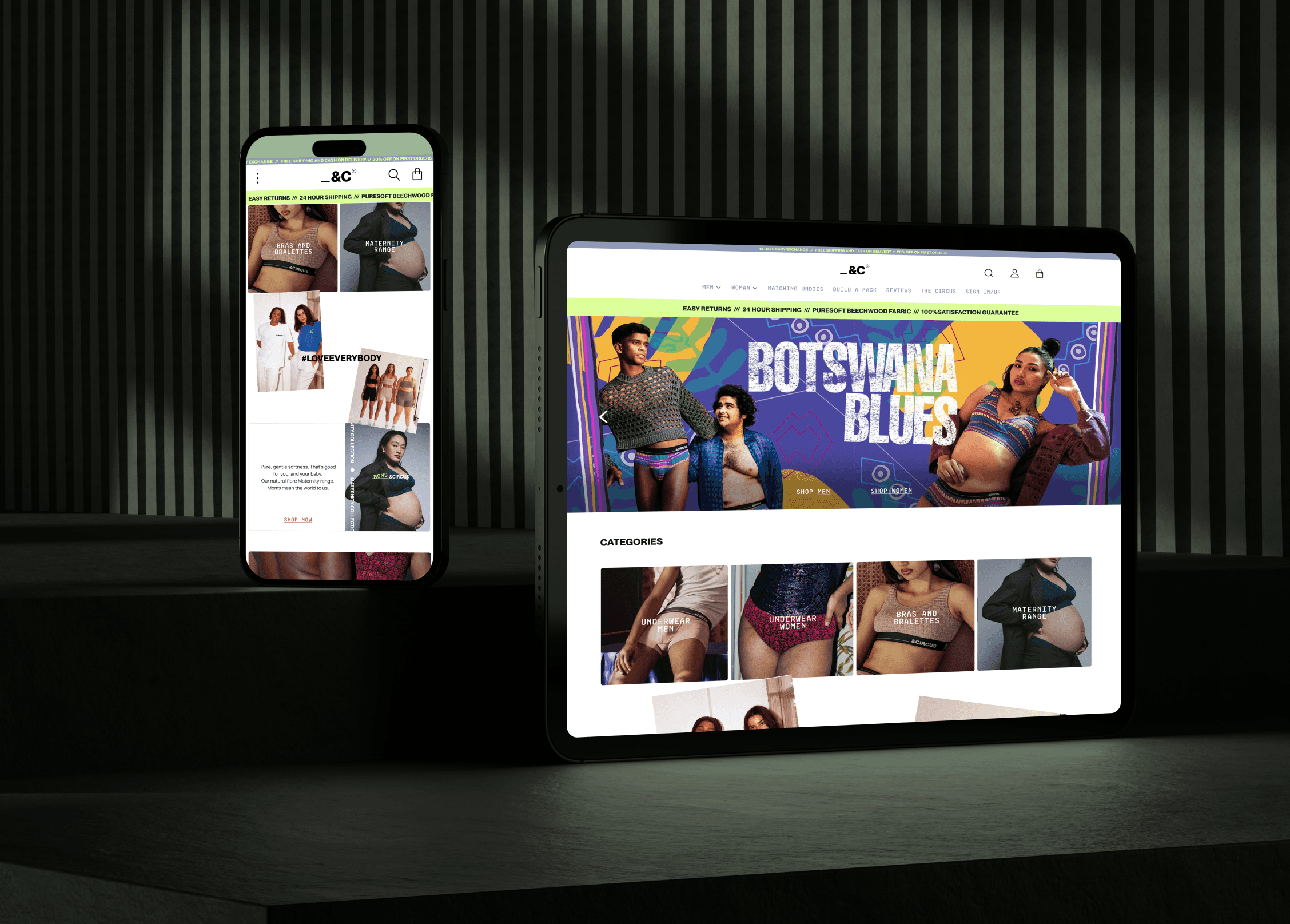The Client
IndieFolio is transforming how creative work gets done. Rather than relying on a traditional in house agency model, they enable brands to collaborate with over 1,000+ independent creatives and boutique studios. Their platform helps companies build custom creative teams on-demand, backed by strong project management and tech enabled systems.
With over 350 brands using the platform, IndieFolio’s product needed to scale smoothly, not just in terms of volume, but in complexity, flexibility, and speed.
The Client
IndieFolio is transforming how creative work gets done. Rather than relying on a traditional in house agency model, they enable brands to collaborate with over 1,000+ independent creatives and boutique studios. Their platform helps companies build custom creative teams on-demand, backed by strong project management and tech enabled systems.
With over 350 brands using the platform, IndieFolio’s product needed to scale smoothly, not just in terms of volume, but in complexity, flexibility, and speed.
Creative Challenges
The first was low client retention. Many users would complete a project but struggle to return, re-engage, or reuse the system. Essential workflows, like finding talent, approving deliverables, or managing follow-ups, were fragmented, making it harder for clients to continue working on new briefs.
The second was poor feature discoverability for creators. Tools like availability settings, structured proposal building, and milestone-based submissions existed, but were difficult to find or use intuitively. As a result, creators underused key functionality, and project managers often had to step in manually, defeating the purpose of a self-serve, scalable platform.
Creative Challenges
The first was low client retention. Many users would complete a project but struggle to return, re-engage, or reuse the system. Essential workflows, like finding talent, approving deliverables, or managing follow-ups, were fragmented, making it harder for clients to continue working on new briefs.
The second was poor feature discoverability for creators. Tools like availability settings, structured proposal building, and milestone-based submissions existed, but were difficult to find or use intuitively. As a result, creators underused key functionality, and project managers often had to step in manually, defeating the purpose of a self-serve, scalable platform.



Our Approach
Rather than starting with rigid specifications, we took a fluid and collaborative approach. Working closely with IndieFolio’s leadership and product team, we co created the redesign through ongoing workshops, feedback sessions, and live Figma iterations.
Each flow was refined with real-world context. Together, we mapped out all the different use cases across project types, from fixed cost creative gigs, to ongoing retainers, to actuals based billing. This helped ensure that the UX could flex as needed, without forcing users into a one size fits all pattern.
Our Approach
Rather than starting with rigid specifications, we took a fluid and collaborative approach. Working closely with IndieFolio’s leadership and product team, we co created the redesign through ongoing workshops, feedback sessions, and live Figma iterations.
Each flow was refined with real-world context. Together, we mapped out all the different use cases across project types, from fixed cost creative gigs, to ongoing retainers, to actuals based billing. This helped ensure that the UX could flex as needed, without forcing users into a one size fits all pattern.



What We Did
The redesign focused on bringing clarity, flexibility, and confidence to every user interaction. We completely restructured the dashboard so users could instantly see active projects, briefs, and tasks. Proposal creation, once complex and error prone, was transformed into a streamlined experience where creators could select deliverables, define milestone based payments, and send professional proposals with ease.
What We Did
The redesign focused on bringing clarity, flexibility, and confidence to every user interaction. We completely restructured the dashboard so users could instantly see active projects, briefs, and tasks. Proposal creation, once complex and error prone, was transformed into a streamlined experience where creators could select deliverables, define milestone based payments, and send professional proposals with ease.






Smart Availability
We also introduced availability toggles that let creators indicate their bandwidth by project type, helping the platform make smarter matches and reduce manual coordination.
Smart Availability
We also introduced availability toggles that let creators indicate their bandwidth by project type, helping the platform make smarter matches and reduce manual coordination.












Unified Workspace
One of the biggest shifts was the creation of a unified project workspace.
Previously, conversations, files, submissions, and invoices lived in different silos. Now, everything is housed in one cohesive view, making it easier for clients, creators, and account managers to collaborate, share updates, and track progress without confusion.
Even the project cards were redesigned to clearly surface statuses, due dates, and ownership, reducing friction across the board.
Unified Workspace
One of the biggest shifts was the creation of a unified project workspace.
Previously, conversations, files, submissions, and invoices lived in different silos. Now, everything is housed in one cohesive view, making it easier for clients, creators, and account managers to collaborate, share updates, and track progress without confusion.
Even the project cards were redesigned to clearly surface statuses, due dates, and ownership, reducing friction across the board.






Design Process & Visuals
We designed multiple key screens that brought the vision to life. The new dashboard offered a task first view of briefs and milestones. The proposal builder turned complex pricing models into clean, modular steps. Creator profiles now included project-based availability and richer data display.
The project workspace tied together chat, files, feedback, and invoicing, all in one place. Every visual was built on a shared system to ensure consistency across roles and project types.
Design Process & Visuals
We designed multiple key screens that brought the vision to life. The new dashboard offered a task first view of briefs and milestones. The proposal builder turned complex pricing models into clean, modular steps. Creator profiles now included project-based availability and richer data display.
The project workspace tied together chat, files, feedback, and invoicing, all in one place. Every visual was built on a shared system to ensure consistency across roles and project types.






Testing & Iteration
Once designs were delivered, IndieFolio’s internal team ran hands-on testing sessions with their client managers.
This surfaced one major UX issue: the invoice flow. It felt buried, unintuitive, and didn’t match how users think about billing, which often happens alongside project conversations or milestone reviews.
We responded by bringing invoice actions into the main project workspace and tying them directly to milestones. The rest of the flows held up well and moved into implementation as is.
Testing & Iteration
Once designs were delivered, IndieFolio’s internal team ran hands-on testing sessions with their client managers.
This surfaced one major UX issue: the invoice flow. It felt buried, unintuitive, and didn’t match how users think about billing, which often happens alongside project conversations or milestone reviews.
We responded by bringing invoice actions into the main project workspace and tying them directly to milestones. The rest of the flows held up well and moved into implementation as is.









The Results
The result was a more discoverable, navigable, and role aware platform. Creators could now manage their proposals and submissions without support. Clients could find talent and track progress with ease. Account Managers had the visibility and control they needed to manage complex pipelines.
While post-launch metrics were still in progress, the redesign gave IndieFolio a stronger foundation to grow, retain users, and reduce manual operations at scale.
The Results
The result was a more discoverable, navigable, and role aware platform. Creators could now manage their proposals and submissions without support. Clients could find talent and track progress with ease. Account Managers had the visibility and control they needed to manage complex pipelines.
While post-launch metrics were still in progress, the redesign gave IndieFolio a stronger foundation to grow, retain users, and reduce manual operations at scale.
Next Case Studies
Artificial Intelligence
Web Design
SaaS
Transforming UX & conversion for AI dubbing
See how Groto redesigned Camb.ai AI dubbing platform—real-time, 140+ languages, user-friendly UI, and higher engagement for global content creators

Artificial Intelligence
Web Design
SaaS
Transforming UX & conversion for AI dubbing
See how Groto redesigned Camb.ai AI dubbing platform—real-time, 140+ languages, user-friendly UI, and higher engagement for global content creators

Ecommerce
Web Design
_&Circus, but smoother
&Circus, India’s body-positive underwear brand, gets a bold, mobile-first redesign. Smoother shopping, playful UI, and boosted conversions for all users

Ecommerce
Web Design
_&Circus, but smoother
&Circus, India’s body-positive underwear brand, gets a bold, mobile-first redesign. Smoother shopping, playful UI, and boosted conversions for all users

Next Case Studies
Artificial Intelligence
Web Design
SaaS
Transforming UX & conversion for AI dubbing
See how Groto redesigned Camb.ai AI dubbing platform—real-time, 140+ languages, user-friendly UI, and higher engagement for global content creators

Ecommerce
Web Design
_&Circus, but smoother
&Circus, India’s body-positive underwear brand, gets a bold, mobile-first redesign. Smoother shopping, playful UI, and boosted conversions for all users



